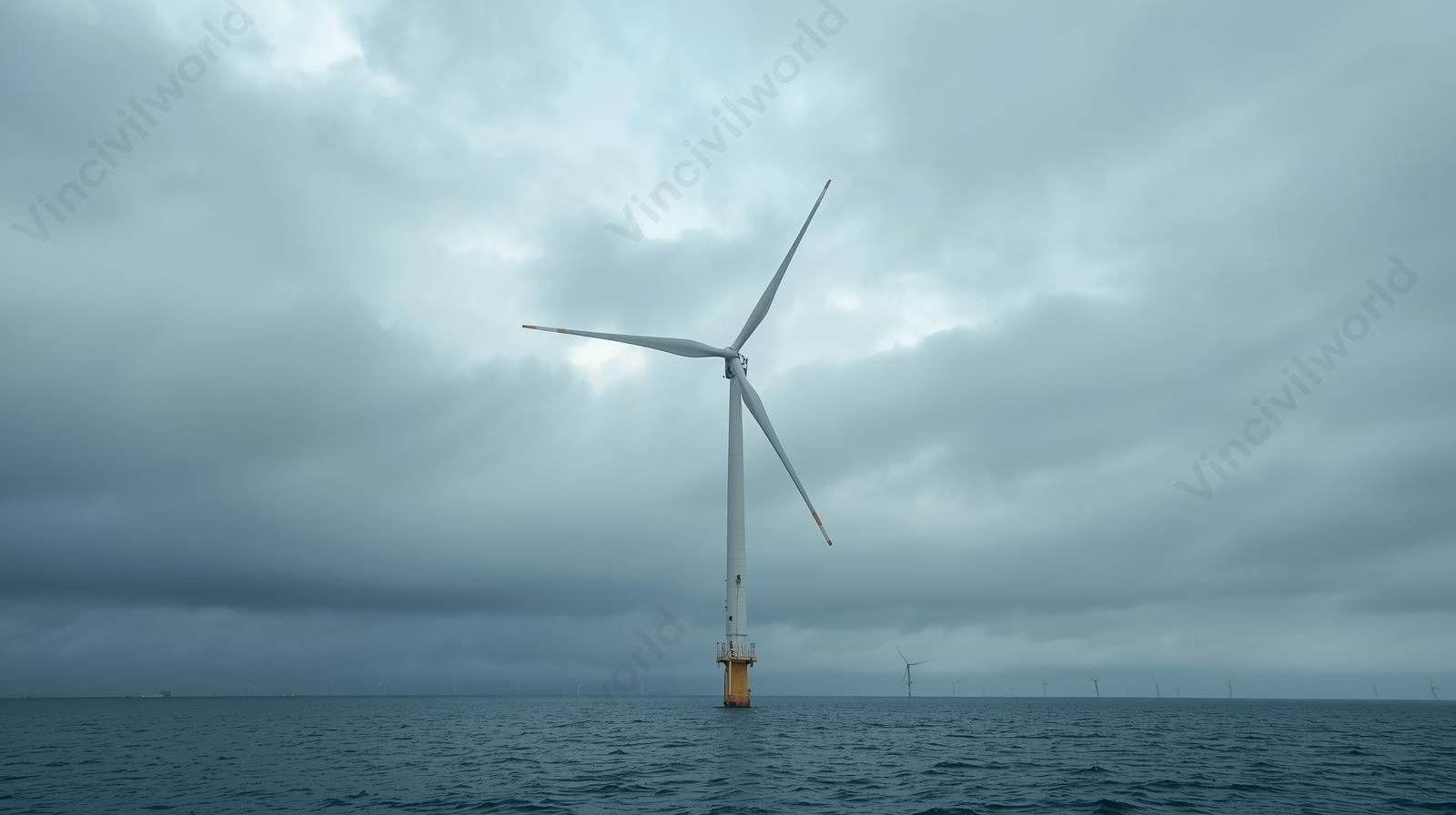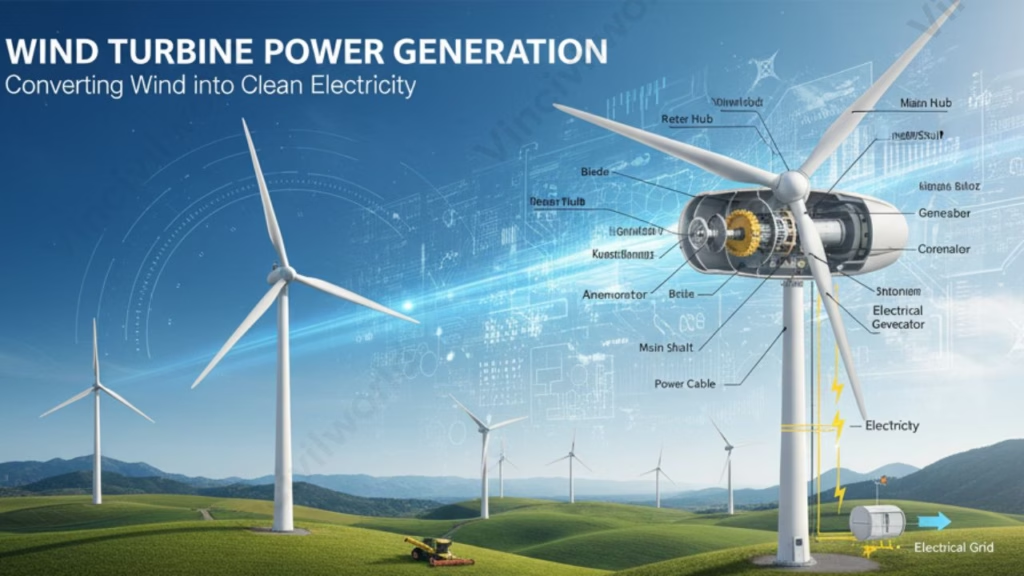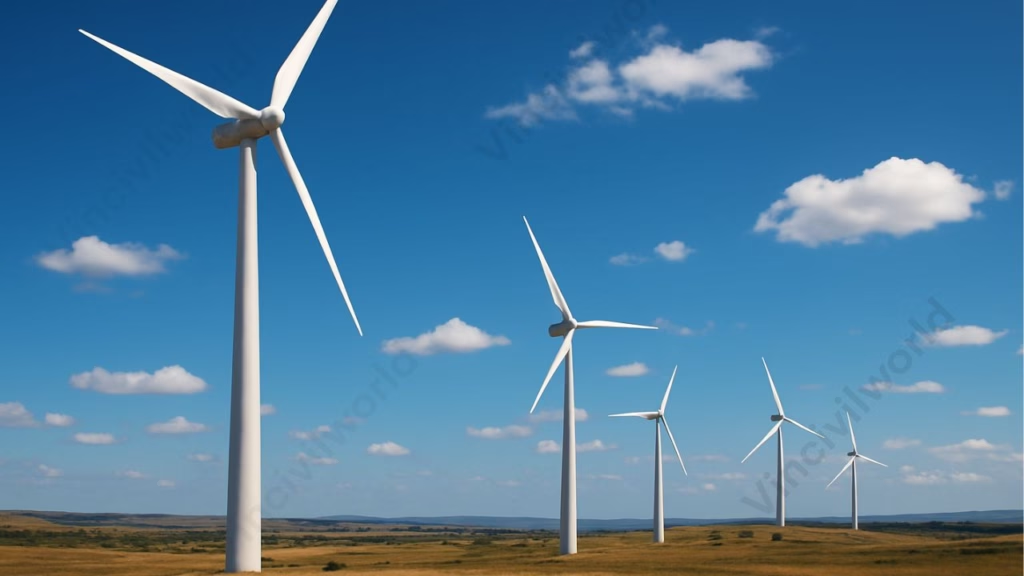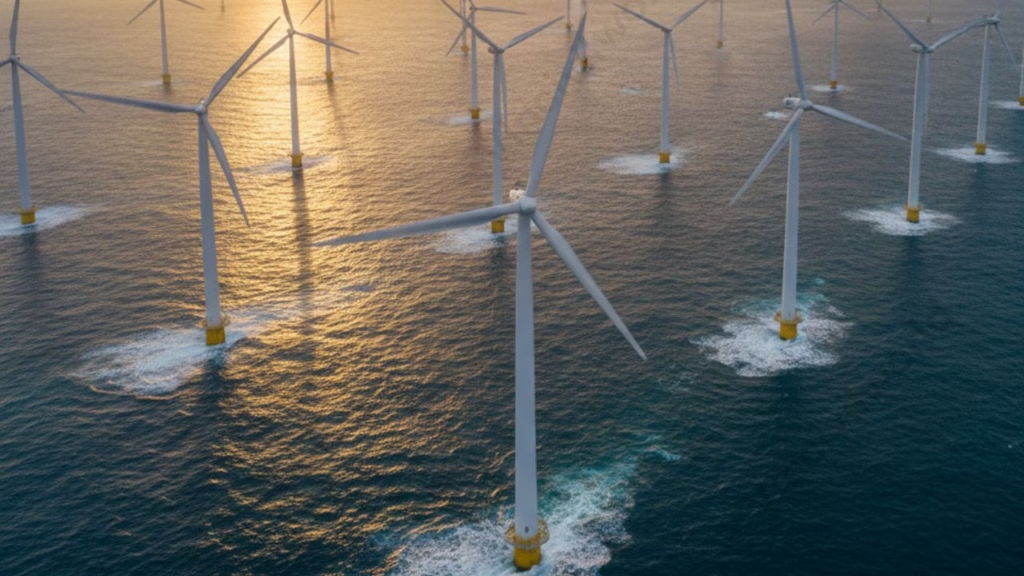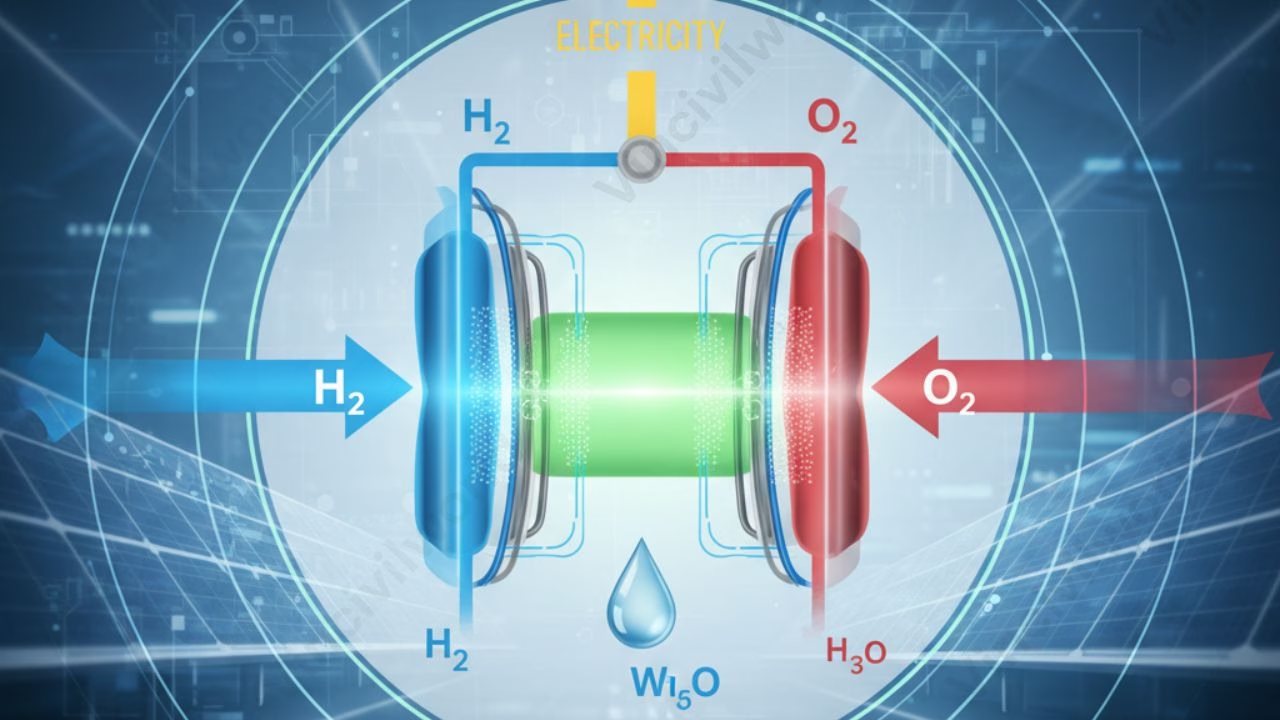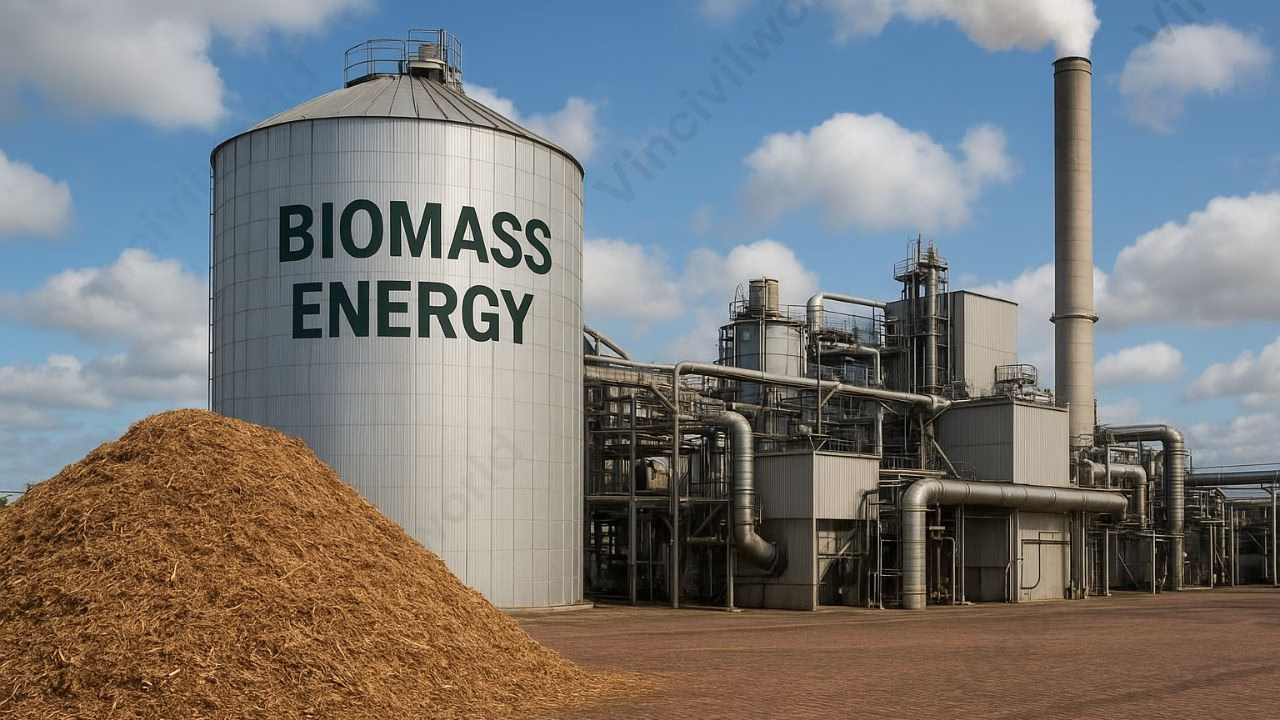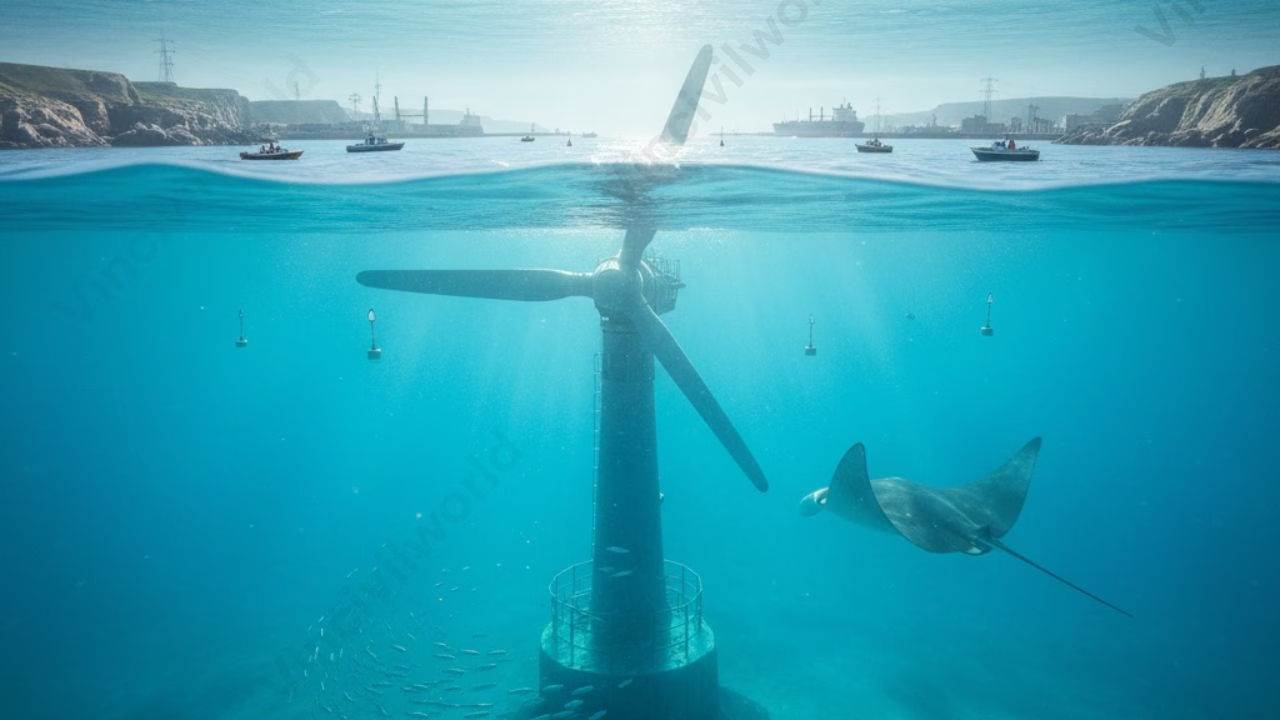Wind energy is one of the most promising sources of renewable power, harnessing the natural movement of air to generate clean electricity. As a renewable source, wind energy reduces dependence on fossil fuels and helps combat climate change. It works through wind turbine power generation, where large blades capture kinetic energy and convert it into electrical power. Understanding how wind energy works reveals its efficiency and growing role in modern energy systems. While there are wind energy advantages and disadvantages, its benefits—such as sustainability and low operating costs—far outweigh its limitations. Today, wind energy applications extend from powering homes and industries to supporting national grids, making it a cornerstone of the global transition toward sustainable energy and a cleaner future for generations to come.
Wind Energy is one of the booming clean energy technologies. According to IRENA’s latest data, global installed wind-generation capacity onshore and offshore has expanded by about 75 times in the last two decades, from 7.5 gigawatts (GW) in 1997 to 564 GW in 2018.
Ever wondered how those massive rotating turbines powered up an entire locality? Join me on this journey to a wind farm exploring the wind turbines, their working, advantages and disadvantages. Let’s get started
Table of contents
How does wind energy work ?
Wind energy works by using wind turbines to convert wind power into mechanical energy, which is then transformed into electricity through a generator, producing clean and renewable wind energy. Wind energy or wind power refers to the process of using the wind to generate mechanical or electrical power. This mechanical energy can be employed for specialized purposes such as pumping water or it can be converted to electricity using a generator.
A wind farm is a collection of wind turbines that are all located in the same area. A huge wind farm can include hundreds of separate wind turbines spread out over a vast region. The Gansu Wind Farm is the world’s largest wind farm. We can utilize the land between the turbines for farming or other activities. In a fully established wind farm, we place a distance of 7D (7 times the rotor diameter of the wind turbine) between each turbine.
Individual turbines in a wind farm are linked by a medium-voltage power gathering system and a communication network. This medium-voltage electric current is boosted in voltage by a transformer at a substation before being connected to a high-voltage electric power transmission system.
Let’s understand how wind energy works and the working of a wind turbine.
Wind turbine power generation
Wind turbine power generation converts natural wind energy into clean electricity using advanced wind turbines. This process harnesses the kinetic force of the wind, making wind turbine power generation a reliable, sustainable, and eco-friendly solution for renewable energy production worldwide.
The aerodynamic force from the rotor blades, which act similarly to an aeroplane wing or helicopter rotor blade, converts wind energy into electricity in a wind turbine. The air pressure on one side of the blade lowers when the wind blows across it. This difference in air pressure across the two sides of the blade generates lift and drag.
The lift force is greater than the drag force, causing the rotor to spin. The rotor is connected to the generator directly or through a shaft and a series of gears that speeds up the rotation. The conversion of aerodynamic force to the generator’s rotation generates power.
Equation for Wind Power
The power that a wind turbine generates, P = 0.5 DAV3
where D = Density of the air
V = Wind Speed
A = Swept area of the turbine
Let me explain in detail how each parameter affects wind power.
Wind Speed
The quantity of energy in the wind is proportional to the cube of the wind speed; ie, if the wind speed doubles, the amount of energy in the wind increases by eight times. Hence we can understand that wind speed fluctuations have a significant impact on the quantity of power available in the wind.
Density of Air
The denser the air, the greater the energy the turbine receives from the wind. The density of the air changes with altitude and temperature. Higher elevations have less dense air than sea level, while warm air has less density than cold air. Turbines will produce greater power at lower elevations and in areas with cooler average temperatures, assuming all other factors are equal.
The swept area of the turbine
The larger the swept area which is the region through which the rotor rotates, the more wind power the turbine can capture. Since swept area (A= pi*r2) is proportional to the square of the radius of the rotor, a slight increase in the length of the blade length leads to a greater increase in the power available to the turbine.
Wind energy advantages and disadvantages
Wind energy advantages and disadvantages highlight both the benefits and challenges of this renewable source. Among key wind energy advantages are sustainability, low operating costs, and zero emissions. However, wind energy disadvantages include noise, visual impact, and dependency on weather conditions. Understanding wind energy advantages and disadvantages helps balance efficiency with environmental and social considerations.
Wind Energy Advantages
Wind energy is a cost-effective choice for many places of the world because it does not require direct sunshine exposure like solar energy. It offers several advantages such as:
Free Fuel
There is no need for extra fuel since wind turbines run only on the power supplied by the wind. After mounting a turbine it does not need to be fueled or connected to power to continue working. This lowers the overall cost of maintaining large-scale wind farms.
Clean source of energy
Wind energy does not contribute to global warming and climate change by producing greenhouse gases during energy generation because it does not rely on fossil fuels to power the turbines. Wind energy only emits greenhouse gases indirectly during the production and transportation of wind turbines, as well as during the installation process. In the long term, this amounts to very low emissions.
Doesn’t Affect Farming Operations
Wind turbines can be built on pre-existing farmland. Energy providers can pay farm owners to build wind farms on their land through contracts or leases. As wind turbine footprints take up very little ground space, it won’t interfere with the farm’s produce. Offshore windfarms helps in saving space.
Reduces our dependence on fossil fuels
Energy from fossil fuel not only contributes to climate change, but it will also run out one day. There is an unlimited supply of wind as long as the sun heats the planet.
Wind Energy Disadvantages
Although wind energy is a renewable and environmentally friendly source of energy, it still has drawbacks and limitations.
Harms wildlife
Wind turbines can harm wildlife. The blades of wind turbines can harm or kill the flying birds and bats that come into contact with the blades. Aside from wildlife that soars through the air, noise pollution from spinning blades may have an impact on animals on the ground.
Noisy
Since wind turbines can be rather noisy, we can mount them only in remote places where few people dwell. Noise isn’t a concern in the case of offshore turbines. As technology advances, we have newer designs that lessen noise issues and offer a much quieter presence.
Expensive Initial Investment
Wind turbines are gigantic structures that are often hundreds of feet tall and demand significant initial investment. The installation of wind turbines in rural areas necessitates additional investment in underground lines to transport power to more populated areas such as towns and cities.
Unreliable and Unpredictable
Wind energy is subject to intermittency, which is a disturbance due to the wind’s inconsistency. Since wind can blow at different speeds, it’s difficult to anticipate how much energy it can deliver at any particular time. This means that suppliers and towns must have an energy reserve or alternate sources of power. This is in the event that the winds stop blowing for an extended period of time.
Wind Energy Applications
Wind energy applications span across multiple sectors, offering clean, renewable power for homes, industries, and utilities. From electricity generation and water pumping to hybrid power systems, wind energy applications reduce carbon emissions, enhance sustainability, and support energy independence across both rural and urban environments worldwide.
List of Wind Energy Applications
- Electricity Generation: Powering homes, businesses, and grids through wind farms.
- Water Pumping: Common in agricultural and remote areas for irrigation and livestock.
- Hybrid Energy Systems: Combined with solar or diesel generators for continuous power supply.
- Desalination Plants: Used to power systems that convert seawater to freshwater.
- Battery Charging Stations: Especially in off-grid or mobile setups.
- Telecommunication Towers: Ensuring consistent energy in remote regions.
- Street Lighting: Sustainable lighting using small wind turbines.
- Heating and Cooling: Supplying electricity for energy-efficient HVAC systems.
- Industrial Power: Supporting green manufacturing processes and reducing fossil fuel dependence.
Wind Energy Future
Wind energy can assist in the production of green hydrogen and green ammonia which are future fuels. This will hasten our rate of energy transformation and reduce the necessity for large-scale, high-cost oil exports.
When we combine all benefits of wind energy and solar energy, we are on our way to realising the full potential of renewable energy through wind-solar hybrid projects. These initiatives will boost efficiency while also ensuring power continuity and consistency. Check out our blog Solar Energy- Definition, Advantages and Future to know more about solar energy.
Shall we wrap up?
Key Takeaways
- Wind Energy is a promising renewable power source that converts the kinetic energy of wind into electricity.
- Wind turbines capture wind energy, generating mechanical energy that transforms into electricity via a generator.
- While Wind Energy offers advantages like sustainability and low operating costs, it also has disadvantages such as noise and wildlife impact.
- Global wind generation capacity has significantly increased, highlighting its expanding role in clean energy solutions.
- The future of Wind Energy includes contributions to green hydrogen and solar hybrid projects, enhancing efficiency and reducing fossil fuel dependence.
Conclusion
Wind energy is generated by the natural movement of air caused by the uneven heating of Earth’s surface by solar radiation, making it an indirect form of solar energy. By harnessing wind energy power generation, we can produce clean, renewable electricity without releasing harmful emissions. The advantages of wind energy include sustainability, cost-effectiveness, and minimal environmental impact, while the disadvantages of wind energy mainly involve noise and intermittency. However, with advanced wind energy technology and innovative wind energy applications, these challenges are rapidly being overcome. By adopting wind energy systems alone or alongside solar power, we can reduce our dependence on fossil fuels and move toward a greener, self-sustaining energy future for all.
Happy Learning.

